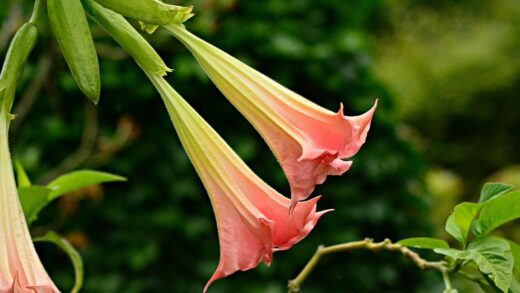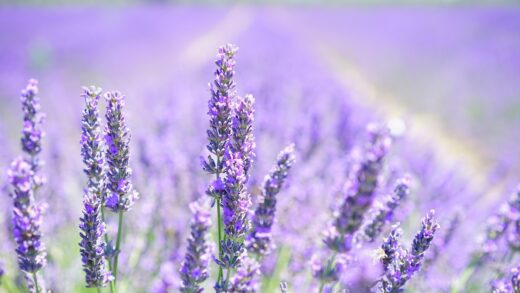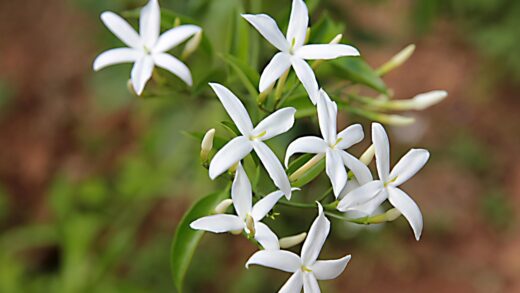While the Banat peony is a relatively robust and resilient plant, it is not entirely immune to the pressures of diseases and pests that can affect its health and diminish its beauty. A vigilant gardener who can recognize the early signs of trouble is in the best position to manage these issues effectively. The primary threats to this peony are fungal diseases, which are often exacerbated by humid weather and poor air circulation. By understanding the most common ailments and unwelcome visitors, and by employing preventative strategies and timely interventions, you can ensure your treasured plant remains a vibrant and healthy centerpiece in your garden for many years to come.
The cornerstone of disease and pest management for the Banat peony is prevention. A healthy, vigorous plant growing in its ideal conditions—well-drained soil, full sun, and good air circulation—is inherently more resistant to problems than a stressed plant. Proper planting depth, appropriate watering techniques that avoid wetting the foliage, and good garden sanitation, such as the removal of all dead foliage in the autumn, are the most effective tools in your arsenal. These cultural practices create an environment that is inhospitable to many pathogens and pests, significantly reducing the likelihood of a serious infestation or infection taking hold.
Common fungal diseases
Botrytis blight, also known as gray mold, is arguably the most common and destructive disease to affect peonies. Caused by the fungus Botrytis paeoniae, this disease thrives in cool, damp, and humid conditions, which are often prevalent in the spring. The first symptoms typically appear as young shoots suddenly wilting and turning black or brown at the base, as if they have been scorched. Flower buds may turn brown and fail to open, and developing flowers can show brown, water-soaked lesions on the petals. A fuzzy gray or brown mold may become visible on any of the affected plant parts, especially during prolonged wet weather.
To manage botrytis blight, sanitation and air circulation are paramount. In the autumn, it is absolutely essential to cut all peony foliage down to the ground and remove it from the garden, as the fungal spores can overwinter on the dead plant debris. During the growing season, promptly remove any infected shoots, leaves, or flower buds as soon as you spot them, cutting back to healthy tissue. Ensure your peonies are not overcrowded and that there is ample space between them and other plants to promote good air flow, which helps the foliage dry quickly after rain. In areas where botrytis is a persistent problem, a preventative fungicide application in early spring as the shoots emerge may be warranted.
Powdery mildew is another common fungal issue, though it is generally less destructive than botrytis. It typically appears later in the season, during warmer and more humid weather, presenting as a white or grayish powdery coating on the upper surfaces of the leaves. While it can be unsightly, it rarely causes serious harm to an otherwise healthy and established peony. However, a severe infection can interfere with photosynthesis and slightly weaken the plant over time. The same preventative measures for botrytis, particularly ensuring good air circulation, will also help to discourage the development of powdery mildew.
More articles on this topic
If powdery mildew does appear, it can often be managed with simple remedies. For minor infections, simply improving air circulation by pruning nearby plants may be enough. For more persistent cases, horticultural oils or neem oil sprays can be effective, as they work by smothering the fungal spores. It is important to apply these treatments according to the product instructions, typically in the cooler parts of the day to avoid leaf scorch, and to ensure complete coverage of the affected foliage. As with botrytis, a thorough autumn cleanup of all fallen leaves and stems is crucial to reduce the amount of fungal inoculum that can overwinter in the garden.
Pests affecting the Banat peony
The Banat peony is fortunate in that it is not plagued by a large number of serious insect pests. However, there are a few that can occasionally cause cosmetic damage or become a nuisance. Ants are perhaps the most commonly observed insects on peonies, frequently seen crawling over the flower buds in late spring. It is a common misconception that ants are required for the buds to open; this is not true. The ants are simply attracted to the sweet, sugary nectar that the buds excrete. They do not harm the plant in any way and may even provide a benefit by preying on other, more harmful insects that might try to feed on the buds. In general, ants on peony buds should be ignored.
Thrips are tiny, slender insects that can cause more significant cosmetic damage. They use their rasping mouthparts to feed on the petals of the flowers, often while the bud is still developing. This feeding can result in distorted blooms, brown or discolored streaks on the petals, and buds that fail to open properly. Thrips are difficult to see with the naked eye, but their damage is quite distinctive. To manage thrips, it is important to remove and destroy any heavily infested buds or flowers. For severe infestations, insecticidal soap sprays can be effective, but they must be applied thoroughly and repeatedly to control the population.
Although less common, scale insects and mealybugs can sometimes infest peonies, particularly plants that are stressed or growing in poor conditions. These sap-sucking insects attach themselves to the stems and the undersides of leaves, draining the plant of vital fluids. A heavy infestation can lead to yellowing leaves and reduced vigor. Scale insects appear as small, immobile bumps, while mealybugs are covered in a white, cottony wax. Both can be controlled by dabbing them with a cotton swab dipped in rubbing alcohol or by applying horticultural oil or insecticidal soap, which works by smothering the pests.
More articles on this topic
Nematodes are microscopic roundworms that can live in the soil and feed on plant roots. While many species are harmless, certain types, such as root-knot nematodes, can cause significant damage to peonies. Infested plants may appear stunted, with yellowing foliage and poor overall vigor. The roots themselves will show characteristic galls or knots where the nematodes are feeding. Unfortunately, there is no chemical cure for nematodes in the home garden. The best course of action is to remove and destroy the infested plant and avoid planting peonies in that same location for several years. Improving the soil’s organic content can also help, as it encourages beneficial fungi that can trap and consume harmful nematodes.
Viral and bacterial diseases
While less common than fungal issues, peonies can occasionally be affected by viral diseases. Viruses can cause a variety of symptoms, including mosaic patterns of light green or yellow on the leaves, ring spots, stunted growth, and distorted foliage. These diseases are systemic, meaning they infect the entire plant, and unfortunately, there is no cure. The viruses are often spread from plant to plant by sap-sucking insects like aphids and thrips, or on contaminated pruning tools.
If you suspect your peony has a virus, it is best to have it properly diagnosed by a local agricultural extension service if possible. Once confirmed, the only responsible course of action is to remove and destroy the entire plant, including the root system. This is crucial to prevent the virus from spreading to other healthy peonies or susceptible plants in your garden. Do not add the infected plant material to your compost pile. Always practice good tool sanitation, sterilizing your pruners between plants to avoid inadvertently spreading viral pathogens.
Bacterial blight is another potential issue, though it is not as common as fungal blights. It can cause dark, water-soaked spots to appear on leaves, stems, and buds. These spots may enlarge and run together, leading to the collapse of the affected tissue. As with fungal diseases, bacterial blight is favored by wet conditions and poor air circulation. The management strategies are also similar: improve air circulation, avoid overhead watering, and remove and destroy infected plant parts promptly. Copper-based fungicides can sometimes offer a degree of control if applied preventatively.
The best defense against both viral and bacterial diseases is to start with healthy, certified disease-free plant stock from a reputable source. Carefully inspect any new plants before introducing them to your garden. Furthermore, maintaining good overall plant health through proper cultural practices is key. A plant that is not under stress from poor soil, improper watering, or nutrient deficiencies will be much better equipped to fend off potential pathogens. A proactive and observant approach is always the most effective strategy.
Preventative strategies and integrated pest management
The most sustainable and effective approach to managing diseases and pests on the Banat peony is through a strategy known as Integrated Pest Management (IPM). IPM is a holistic approach that prioritizes preventative measures and uses chemical interventions only as a last resort. The first and most important step in IPM is proper plant culture. By providing the peony with its ideal growing conditions—full sun, excellent drainage, and good air circulation— you build a strong, resilient plant that is naturally less susceptible to problems.
Regular monitoring is the second pillar of IPM. Make it a habit to inspect your peonies closely at least once a week throughout the growing season. Look for the early signs of disease, such as spots on leaves or wilting shoots, and check for the presence of any pests. Early detection allows you to intervene when the problem is small and much easier to manage. For example, removing a single leaf with the first signs of botrytis is far more effective than trying to treat a plant that is already heavily infected.
The third component of IPM is practicing good garden sanitation. This is perhaps the most critical preventative strategy for peonies. The thorough removal and destruction of all peony foliage in the autumn is non-negotiable, as it eliminates the primary overwintering sites for botrytis spores and other pathogens. Keep the area around your peonies free from weeds, which can harbor pests and compete for resources. Always use clean, sharp tools when pruning or dividing your plants to prevent the spread of disease.
When intervention is necessary, IPM dictates that you should use the least toxic method first. This could mean hand-picking larger pests, using a strong jet of water to dislodge aphids, or applying a biorational product like neem oil or insecticidal soap. Chemical pesticides and fungicides should be reserved for severe infestations that cannot be controlled by other means. If you must use a chemical control, choose one that is specifically labeled for the problem you are targeting and apply it strictly according to the manufacturer’s directions to minimize harm to beneficial insects and the environment.


















